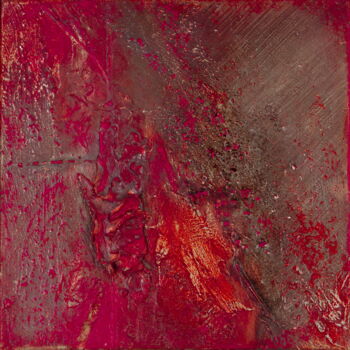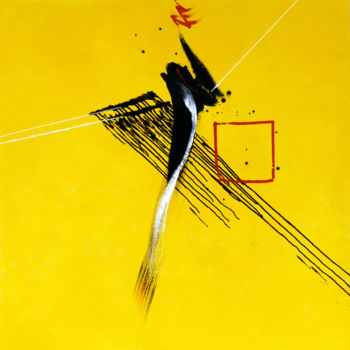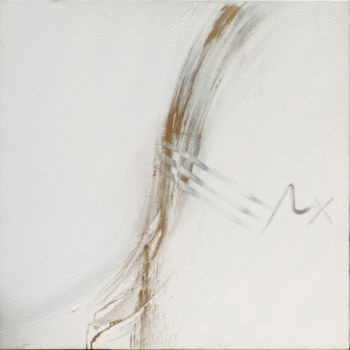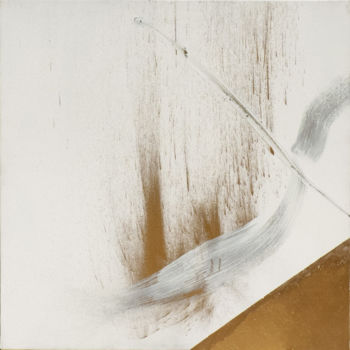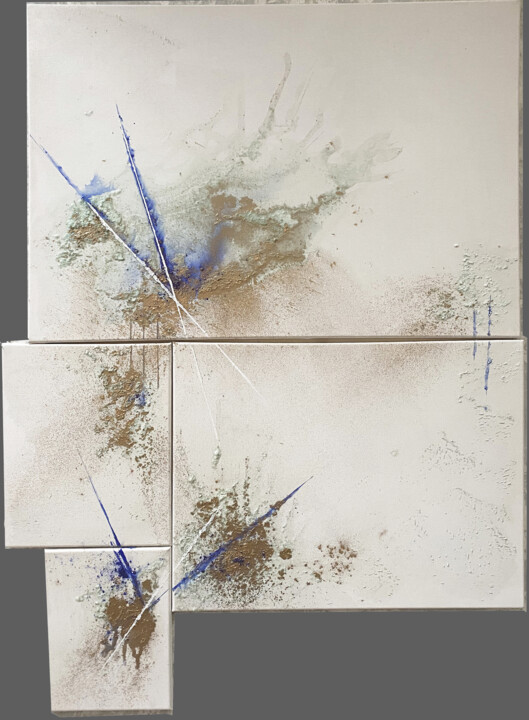
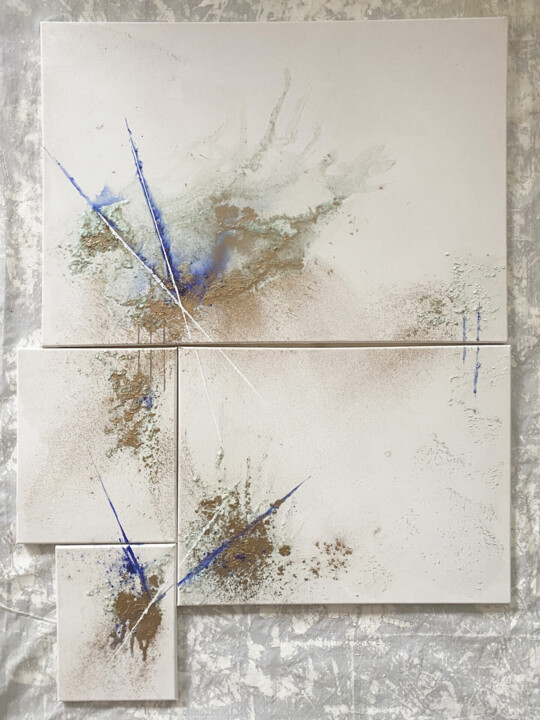
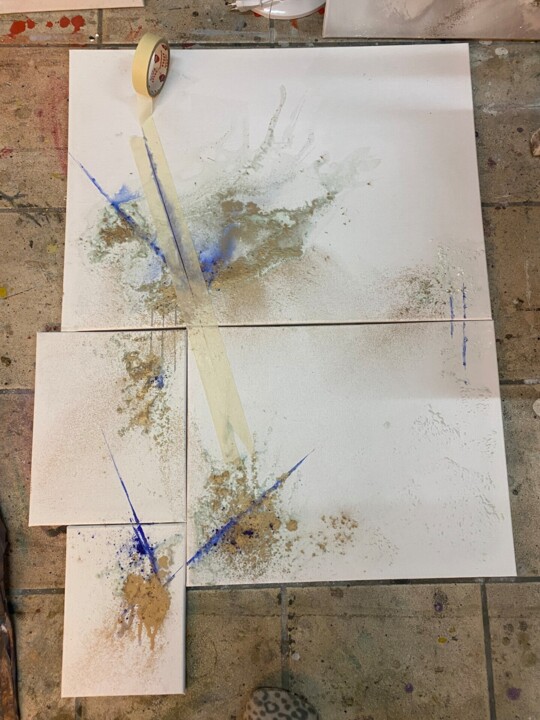
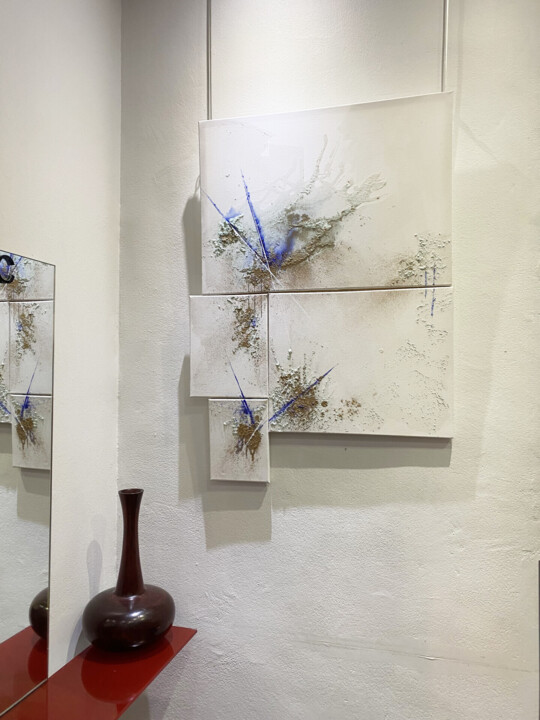
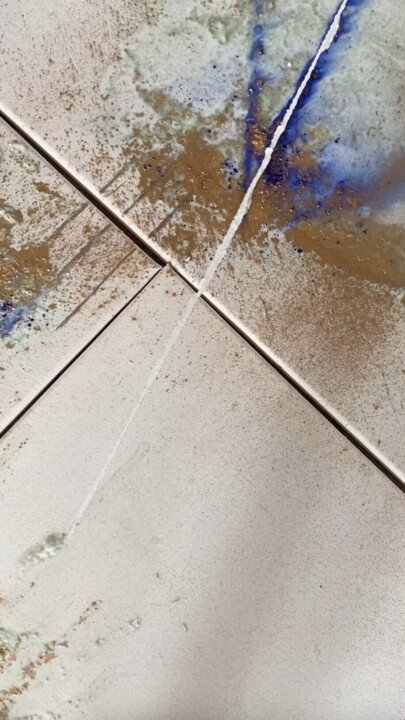
Let us know if you would like to see more photos of this artwork!
- Back of the work / Side of the work
- Details / Signature / Artwork's surface or texture
- Artwork in situation, Other...
POLYPTYQUE BRONZE ET BLEU, MARS-2024 (2024) Painting by Corine Sylvia Congiu
More info
- Packaging (Box or cardboard packaging) All artworks are shipped with a premium carrier, carefully protected and insured.
- Tracking Order tracking until the parcel is delivered to the buyer. A tracking number will be provided so that you can follow the parcel in real-time.
- Delay Worldwide delivery in 3 to 7 days (Estimate)
- Customs not included The price does not include customs fees. Most countries have no import tax for original artworks, but you may have to pay the reduced VAT. Customs fees (if any) are to be calculated on arrival by the customs office and will be billed separately by the carrier.
More info
- Trackable Online Certificate of Authenticity Authenticity Certificates can be verified online at any moment by scanning the artwork code.
- Artist Value Certification Experts study the work and career of an artist then establish an independent and reliable average price value. The average price value situates the artist on a price range for a given period. The experts may also be asked to establish a more precise estimate for a particular work.
More info
100% secure payment with SSL certificate + 3D Secure.
More info
This image is available for download with a licence
Sold by Corine Sylvia Congiu
-
Original Artwork (One Of A Kind)
Painting,
Acrylic
/
Pigments
on Canvas
- Dimensions Height 40.9in, Width 29.1in
- Artwork's condition The artwork is in perfect condition
- Framing This artwork is not framed
- Categories Paintings under $5,000 Abstract Abstract
Le pigment bronze a une haute portée symbolique :
« Le thème des trois coffrets » Freud (1913)
Dans Le Marchand de Venise (Shakespeare), les prétendants doivent faire un choix entre trois coffrets : « La jeune et sage Portia est obligée, par la volonté de son père, de ne prendre pour époux parmi ses prétendants que celui qui, de trois coffrets qu'on lui présente, saura choisir le bon. Les trois coffrets sont d'or, d'argent et de plomb ; le bon est celui qui contient le portrait de la jeune fille. Deux des concurrents se sont déjà retirés sans succès, ils avaient choisi l'or et l'argent. Bassanio, le troisième, se décide pour le plomb ; par-là, il obtient la fiancée qui, avant même l'épreuve du sort, avait éprouvé un penchant pour lui. »[1]
Dans cette généalogie de nos mythes que fait Freud dans «Le thème des trois coffrets le plomb est, des trois métaux précieux, le moins noble, après l'or et l'argent (matériaux pérennes voire éternels, symboles d'incorruptibilité et d'immortalité) : celui qui choisit le plomb signe l'acceptation de son destin fatal, et par cet acquiescement à ce qui doit être, se rend maître de son destin :
« Amor Fati » dirait Nietzsche.
Notre mythologie contemporaine a remplacé sur les podiums le symbole du Plomb[2] des mythes anciens par celui du Bronze dans la hiérarchie des valeurs.
J’ai choisi donc de remplacer le Plomb par le Bronze pour évoquer la corruptibilité par le temps, le concept de l’Éphémère : du pigment pur soufflé sur la peinture fraîche.
Nul autre pigment que le pigment blanc et que le pigment bronze n’a été utilisé pour les peintures de la série « Blanc et Pigment bronze »
D'un point de vue plastique, ce pigment réagit en s'oxydant différemment au contact de chaque matériau employé, encollage, enduit, liants divers, acrylique, huile..., et selon leur temps de séchage. Créant chaque fois la surprise, et rendant impossible toute prévisibilité des tonalités que le Caprice du Temps lui incombera, il est le matériau de prédilection pour une promenade livrée à l’impromptu, à l’improvisation.
NOTES
[1] Suite du texte : « Chacun des prétendants avait, dans un discours, donné les motifs de son choix vantant le métal préféré et diminuant le mérite des deux autres. La plus difficile des tâches était par-là échue à l'heureux concurrent ; ce qu'il trouve à dire pour magnifier le plomb par rapport à l'or et à l'argent est peu de chose et semble forcé. […] Shakespeare n'a pas, lui-même, inventé le thème des trois coffrets ; il l'a pris dans un récit des Gesta Romanorum, où une jeune fille tente ce même choix pour conquérir le fils de l'empereur. Et, là aussi, c'est le troisième métal, le plomb, qui porte la chance. Il n'est pas difficile de deviner qu'il s'agit ici d'un vieux thème, dont il y a lieu de chercher l'interprétation, la dérivation, et ce à quoi il faut le ramener. Une première conjecture sur ce que peut bien signifier ce choix entre l'or, l'argent et le plomb. »
“ Le thème des trois coffrets ” (1913) Sigmund Freud
[2] Outre les connotations de l’usage du mot « plomber », Le plomb a acquis une autre symbolique en cette ère écologique !
Corine Sylvia Congiu, born August 5, 1953 in Meknes, Morocco, is a French contemporary artist who lives and works in Essonne.
Received the Agrégation d'Arts Plastics, she completed a DEA in Aesthetics, two years of philosophy at La Sorbonne while undertaking a career as a painter.
Protean visual artist whose preferred medium remains painting, she also practices drawing, photography, video, publishes a novel and several short stories, selected by prize and competition.
Since 1987, she has regularly exhibited her works in galleries (Galeries Jean, Keller, Génie de la Bastille in Paris, A propos d'Art in Argenteuil, Galerie Depardieu in Nice), fairs (Villeparisis, Montrouge, Comparisons, Première Vision , Art Cité...), Cultural centers (Institut du Monde Arabe...) Museums (Brunoy and Museum of Damascus, Syria) and other notable places (Prieuré Saint-Nicolas Sables d'Olonne, Chapelle Saint Nicolas, Croissy on Seine)
In 1992, she carried out a Public Commission, painted environment (floor, walls and columns) of 350 m2 in the hall of the Lycée Hugues-Capet in Senlis.
To From 1995, his works were exhibited in Moscow, Seoul, Hong Kong, Alexandria, Genoa, San Francisco, Algiers, Damascus, Chicago, Rio de Janeiro, Vienna, Ferrara, Vooburg, Budapest.
In 1998 , winner of the City of Evry Competition, Abolition of Slavery, she completed a 10 m × 2 m painting, which she donated to the Téléthon.
From 1994, she collaborated, as an actress and scenographer, at the work of Luc Fritsch, playwright and director: She creates the entire pictorial environment, at the Théâtre de l'Hôpital Ephémère, 25 paintings projected on a large screen (3m x 4m) for the theatrical performance "Ruines / Post-Vietnam through the survival of a couple" and plays the leading female role. She participated in the sets and created the leading role in 'La Ballade des mégots secs', by Bernard Mazéas, directed by L. Fritsch in 1999 in the Cave à Théâtre in Colombes.
In 2004, for a commission from the Art Dialogue Foundation under the auspices of the Institut de France, she executed the installation Histoire d'une ligne, ten monumental canvases measuring 400 cm × 200 cm and 200 cm × 200 cm on the walls of the City of Yerres, and obtained a purchase by the city.
In June 2014, she produced paintings and drawings for Cosmophonies, a double-voice show created at the Theater des Bouffes du Nord by Hubert Reeves as part of the Festival Jazz Nomades.
She publishes texts in academic journals, developing a theory of Abstract Figures, which distinguishes her work from traditional lyrical abstraction . Both gestural and geometric, these "Figures of thought" play like a rebus of signs superimposed in the watermark of the canvas: “My painting is an open place where a theater of abstract figures is played out, which have an energy, a path, a role within actions which form a dramaturgy. »
-
Nationality:
FRANCE

- Date of birth : 1953
- Artistic domains: Works by professional artists,
- Groups: Professional Artist Contemporary French Artists












